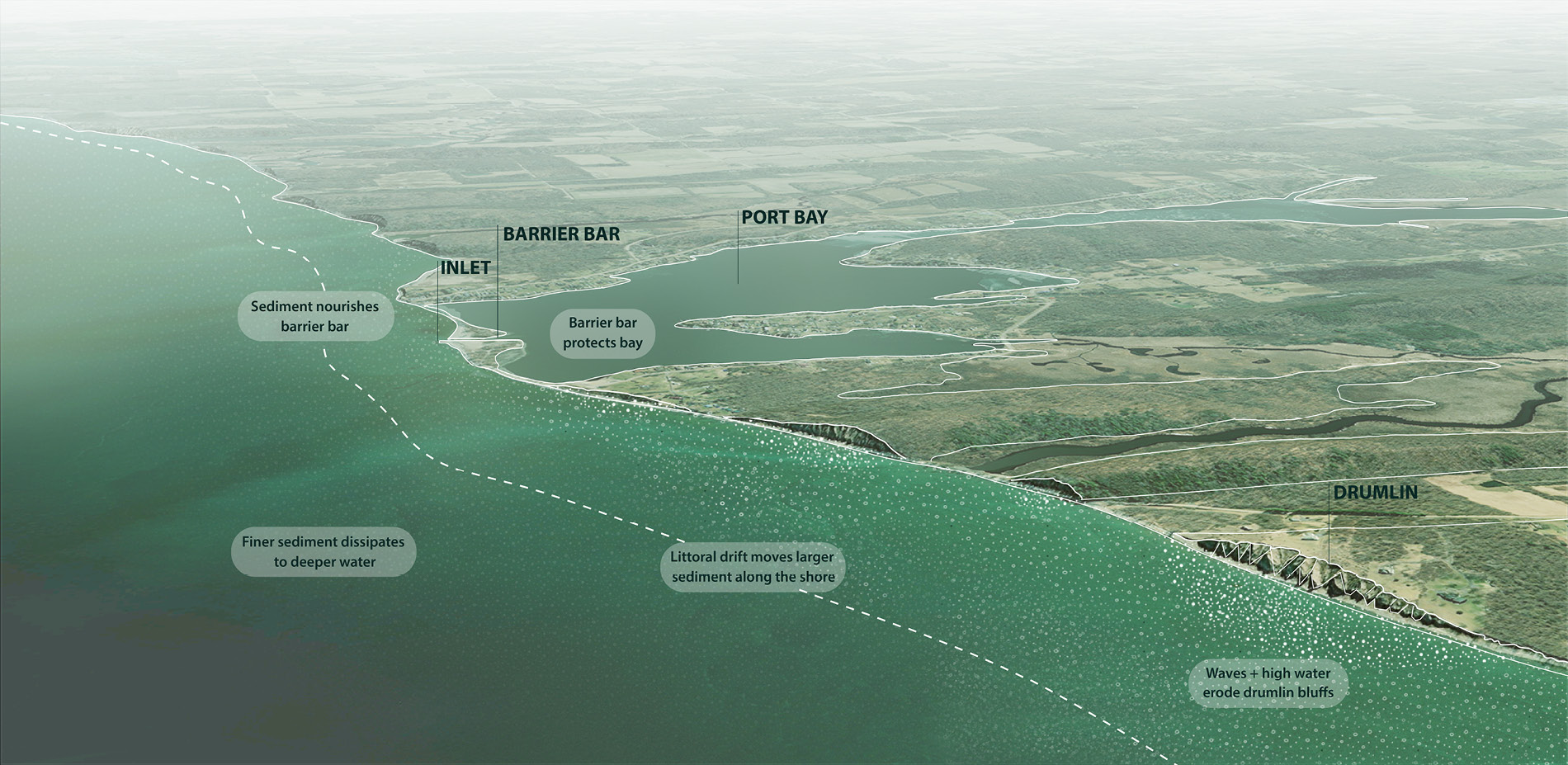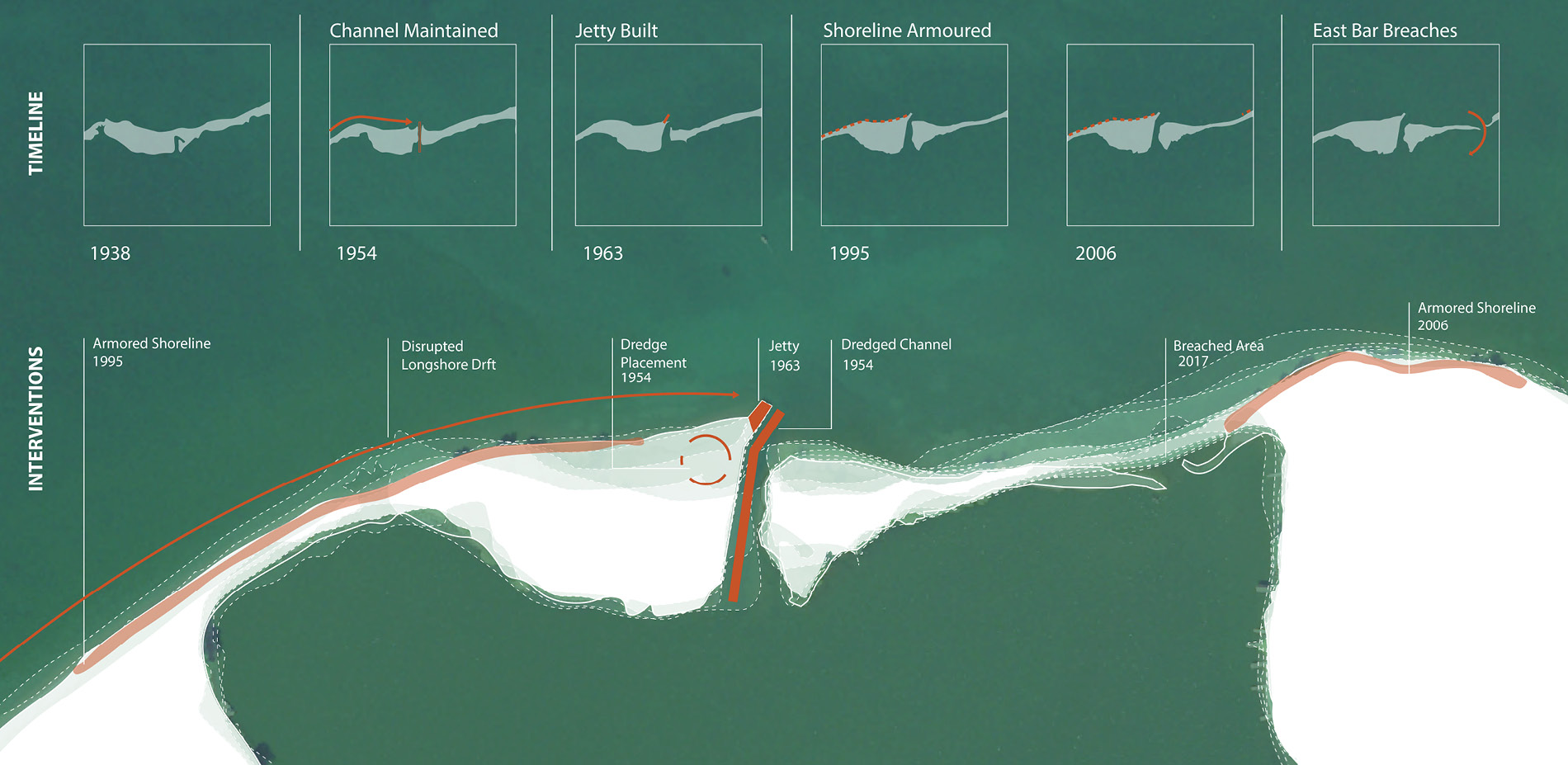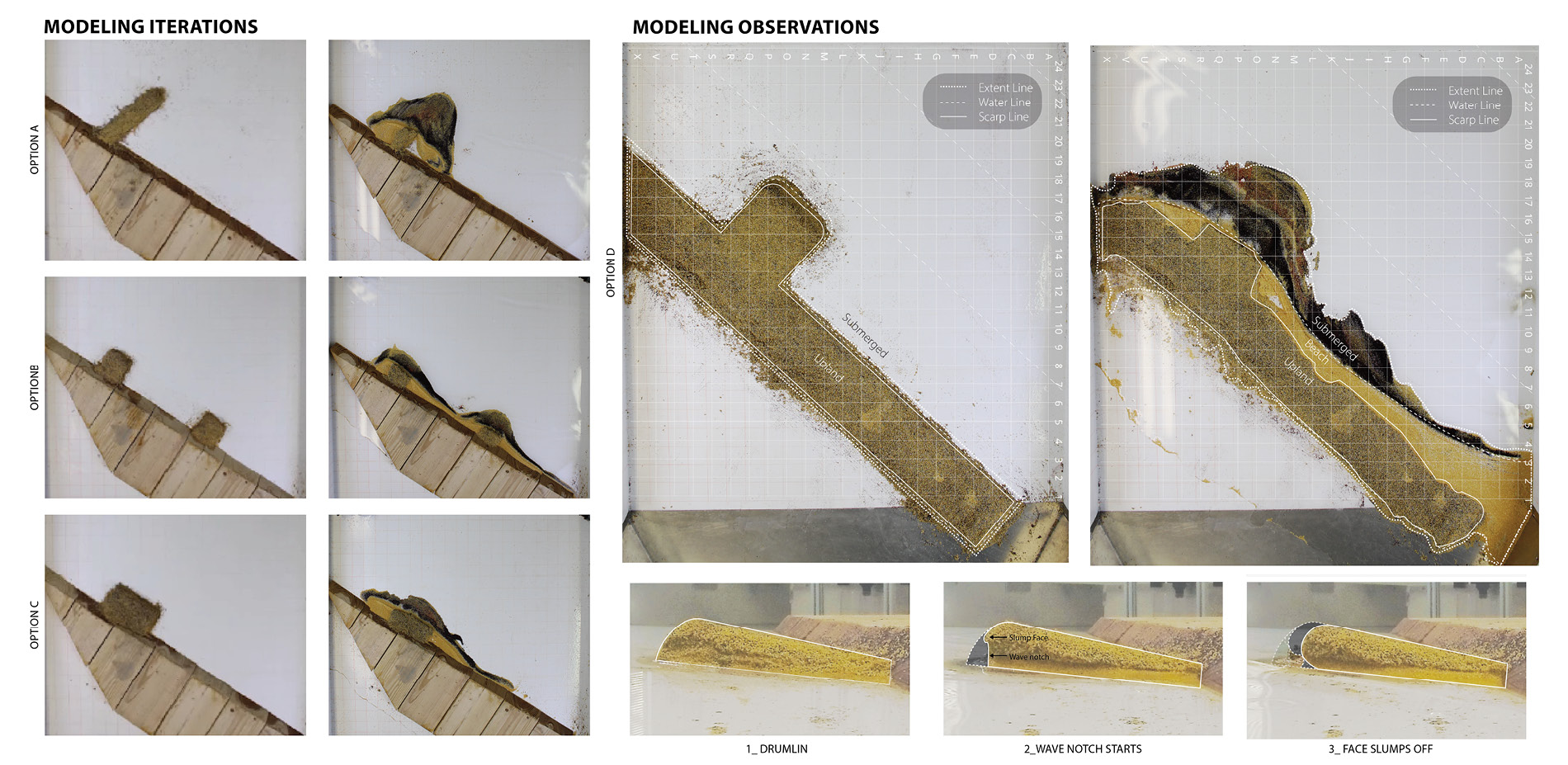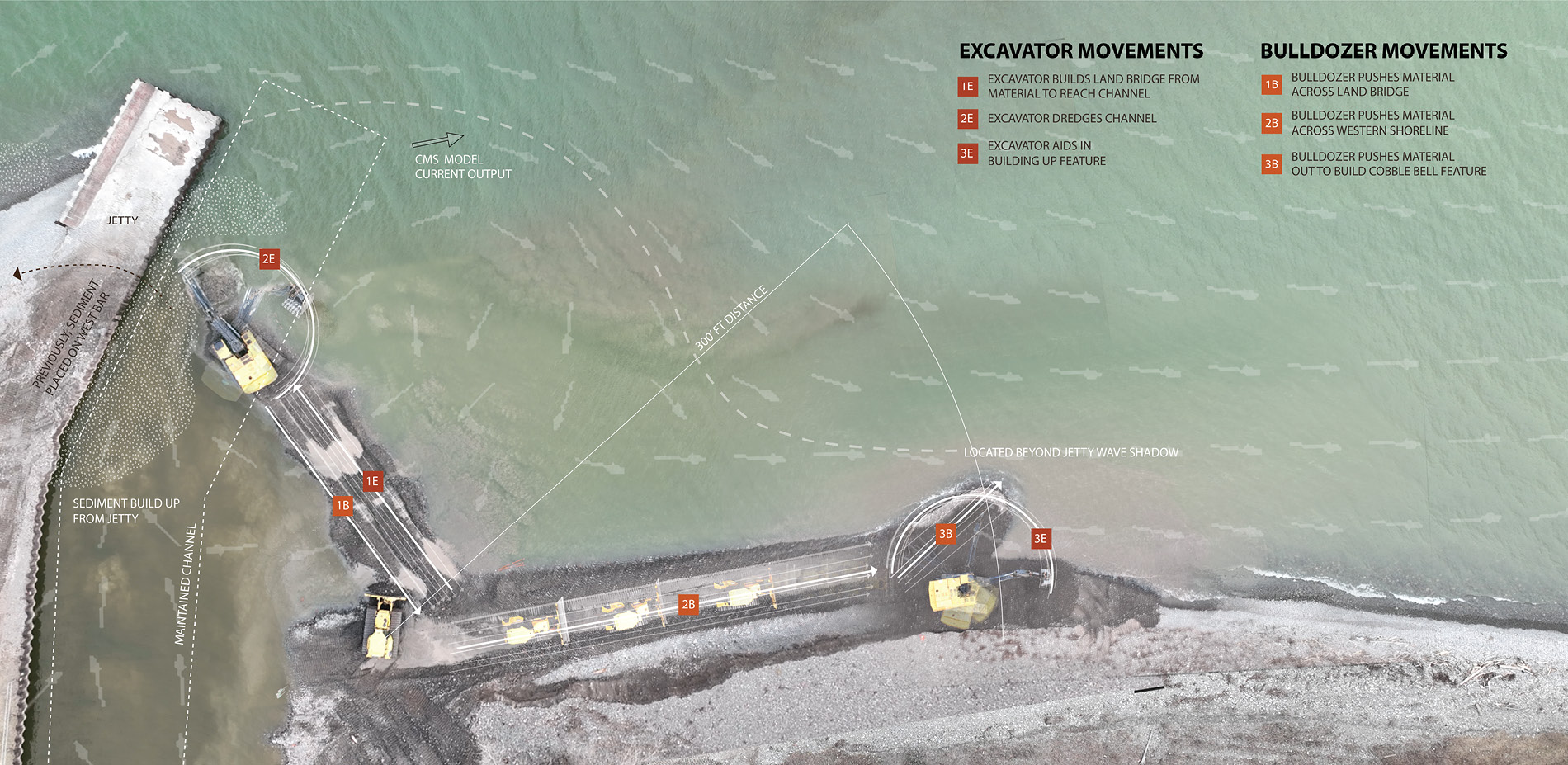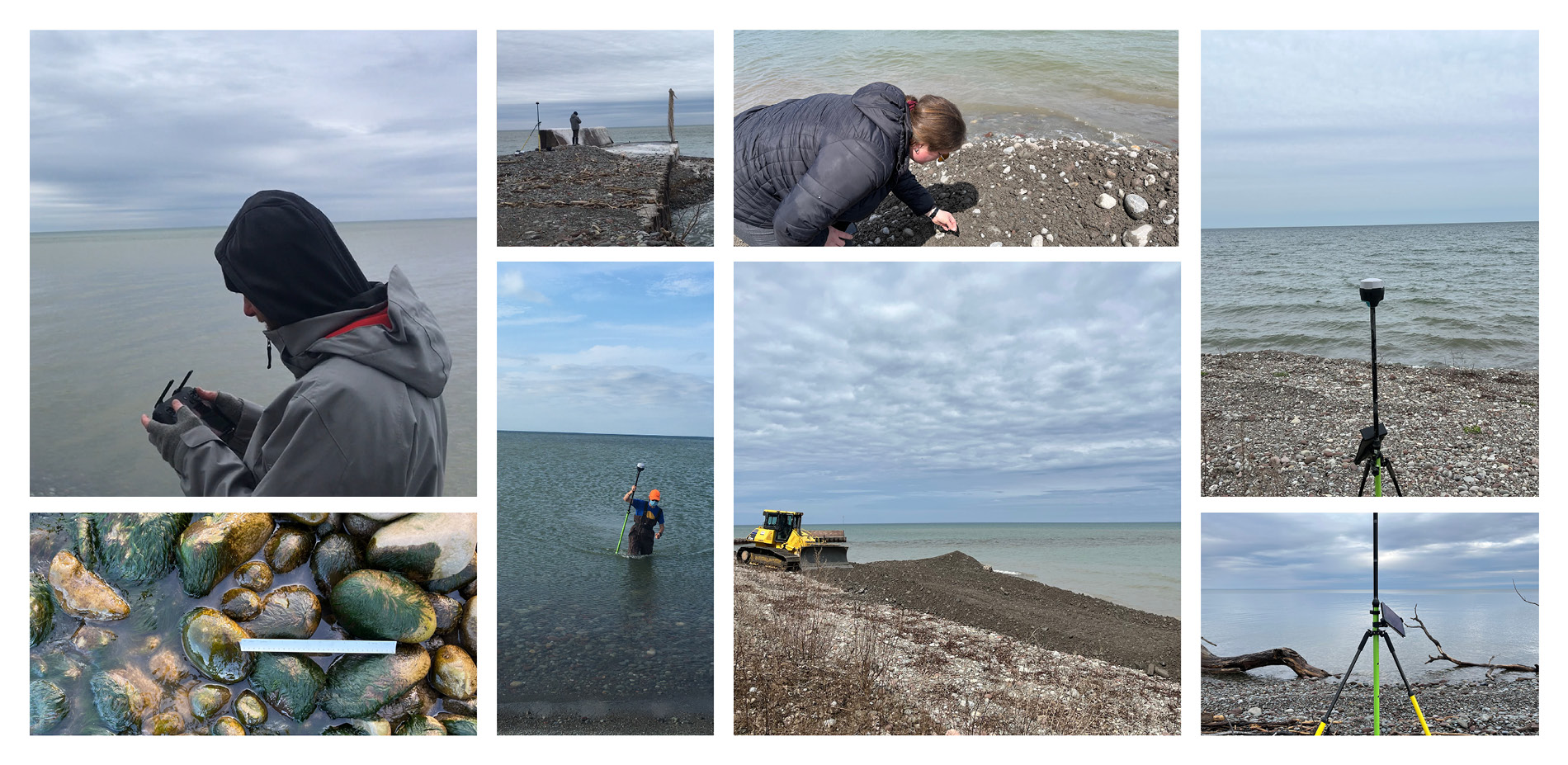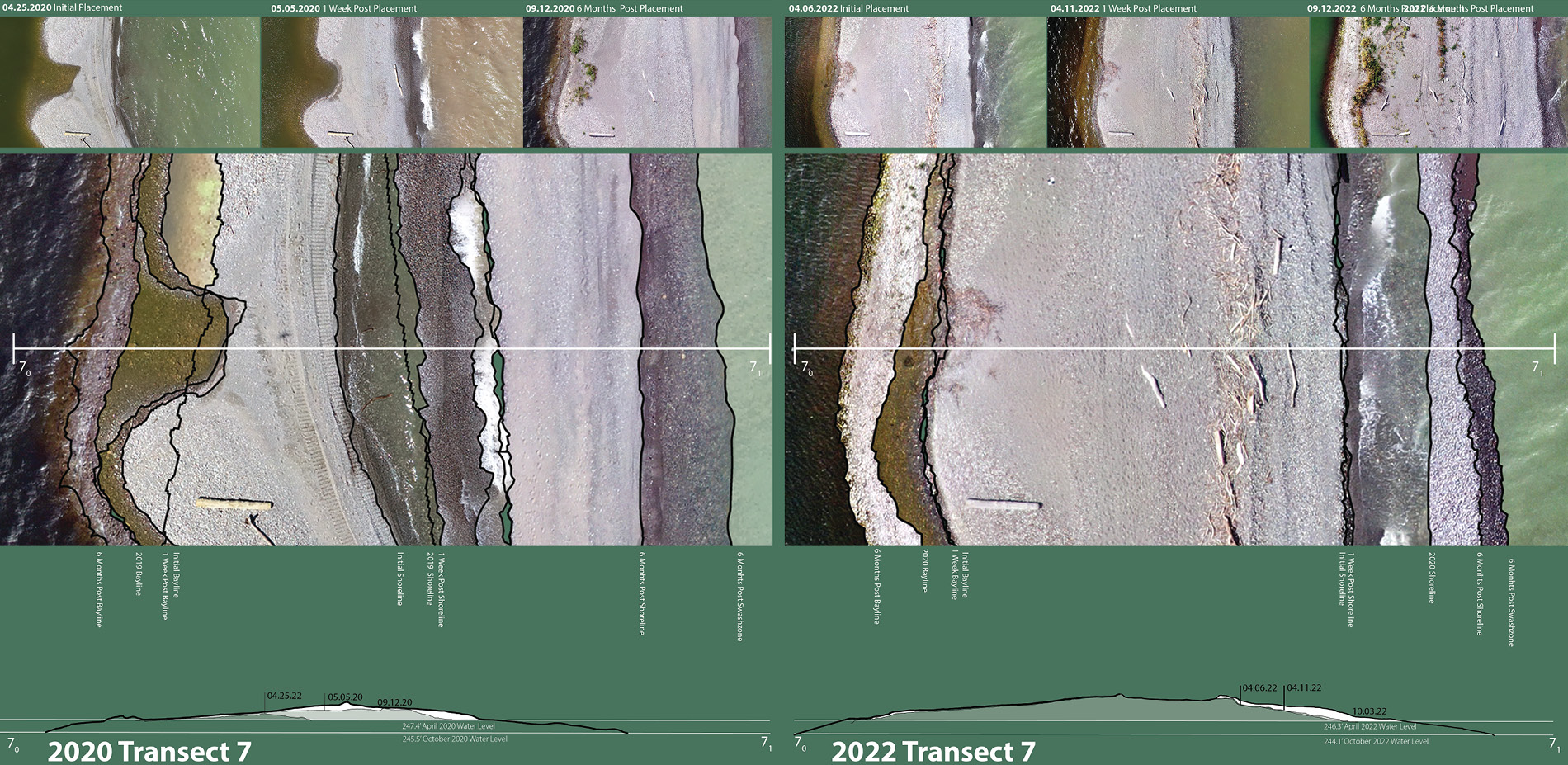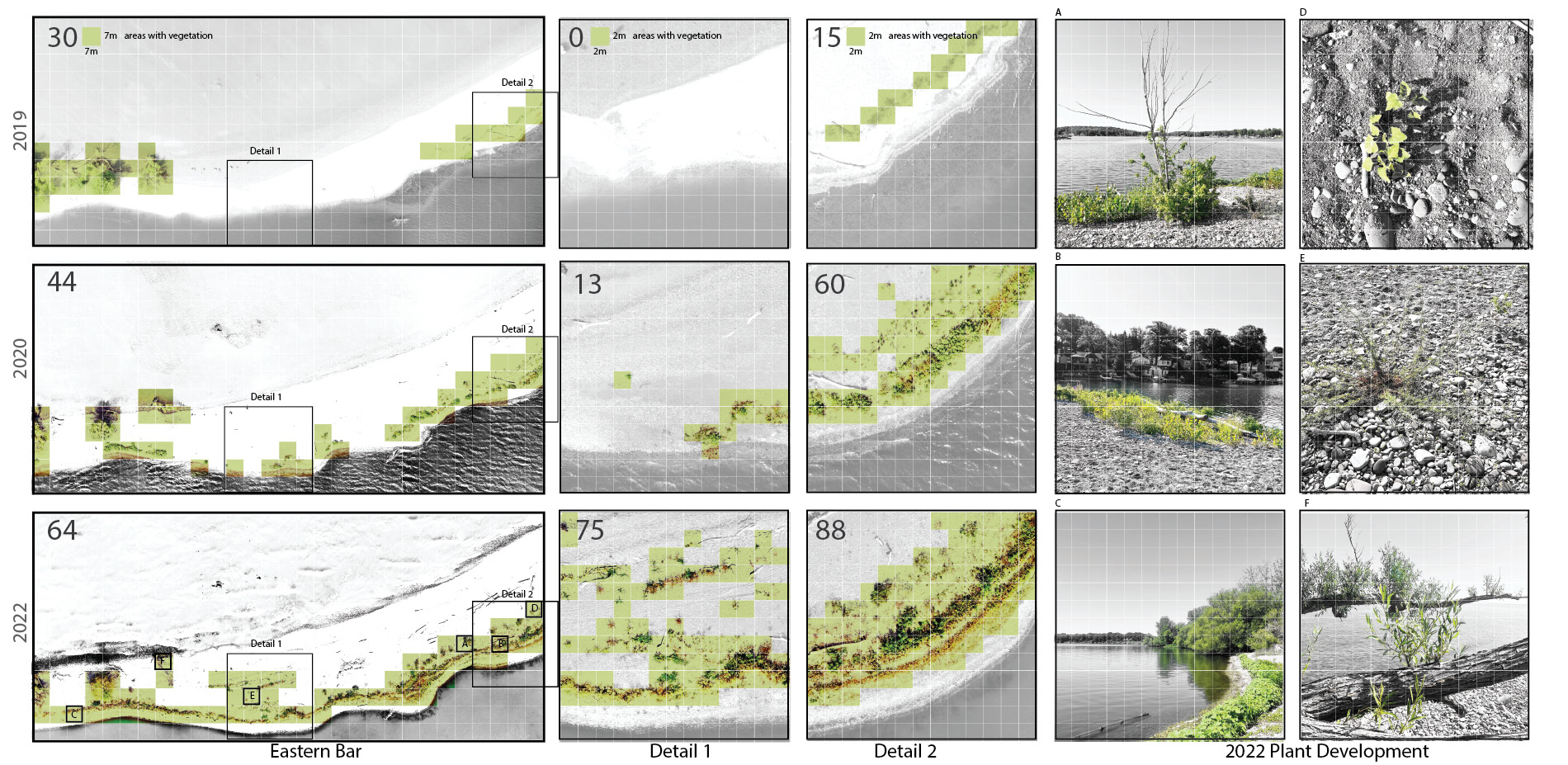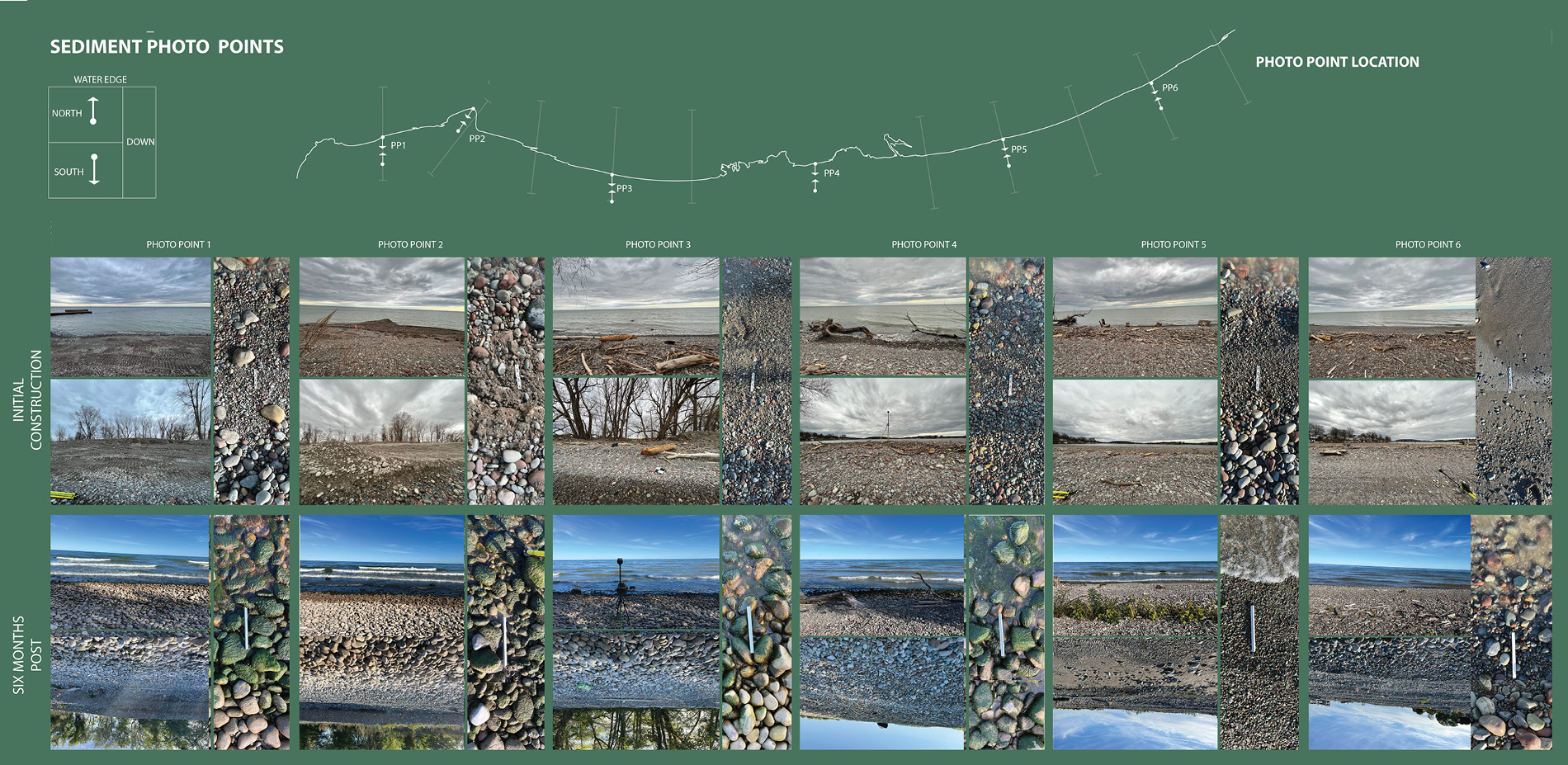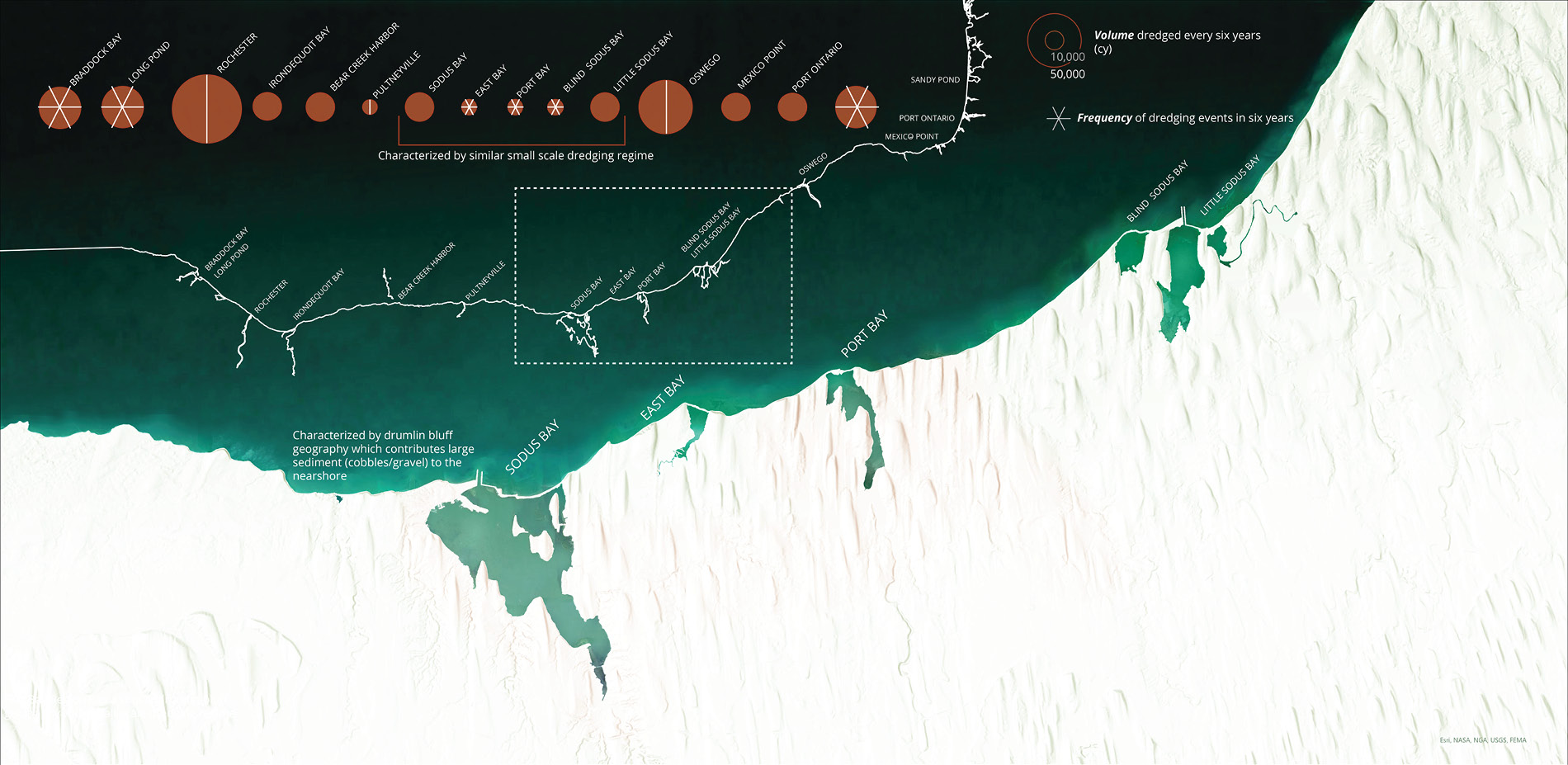The Cobble Bell: Research through Geology-Inspired Coastal Management
Honor Award
Research
Port Bay, New York, United States
Proof Projects LLC
Client: Great Lakes Protection Fund
Fantastic and innovative experiment and study methods for a significant ecological challenge. The positive results are clear and highly transferable to other communities facing similar challenges. The sedimentation study conducted as a real-world pilot for observation over two years was interesting and could inform how we work with sedimentation in fluid landscapes.
- 2023 Awards Jury
Project Credits
Sean Burkholder, ASLA, Co-Founder of Proof Projects
Brian Davis, Co-Founder
Tess Ruswick, Managing Principal
Project Statement
Located in the small community of Port Bay, New York, the Cobble Bell project is an annual sediment management/data collection landscape event that takes the form of a small, temporary nearshore topographic feature. As more event than a thing, it serves as an example of a landscape-led coastal management methodology that, at its foundation, is a constructed research project aimed at learning more about the coastal process affecting the community and how to better work with them in the face of a changing climate.
Project Narrative
Port Bay, New York, is a small community proud of its access to Lake Ontario. This access is made possible by Port Bay itself, separated from the turbulence of the lake by a lone sandbar. This system of coastal bays and the sandbars that protect them is a common feature of this region of New York, where glacially-deposited drumlins erode and contribute sediment to a longshore system that built the bars. Today, however, this transport is compromised by erosion control measures in the form of hard infrastructure that armors the shore or sticks into the water to stop sediment movement. While this process does build coastal beaches locally, it starves sediment-dependent coastal features and ecosystems elsewhere. This is a landscape that is both special and kept safe by erosion. Operating under the general hypothesis that landscape processes like erosion can be used productively as opposed to protected against, the Cobble Bell works with coastal processes to generate protective and ecological value while also working within existing local financing structures and limits. It does so by acting like a sacrificial drumlin designed to erode and contribute sediment to the longshore system. Along the way, it builds a dataset of information about local coastal processes that makes a case for their productivity and informs future decision-making. The Cobble Bell draws inspiration from a lineage of recent strategic sediment management experiments such as the “Sand Engine” in the Netherlands, where waves and water are harnessed to move sediment and build land. Projects of this type necessitate research to understand the potential values of local landscape processes, but the landscape-scale conditions of Port Bay were not well documented or studied. The Cobble Bell project allows the construction, management, and monitoring of the project itself to serve the function of research by testing a hypothesis and building valuable local knowledge through a process of “research by design.” The methodology behind the project involved creating several simple numerical (CMS Wave / Aquaveo) and physical (water table with wave inputs) models to test possible configurations and erosion/transformation responses. These were then used to justify the first placement in 2020 and to monitor the process. Ongoing analysis of the barrier bar over time showed positive elevation change and shoreline growth within the weakened areas of the bar, soon after the erosion of the form. These repeated observations also revealed how quickly the form eroded, within a matter of days, not weeks, as was initially predicted. This information was then used to time and place the operation in 2022, again showing positive results. As a type of constructed experiment, the Cobble Bell generates valuable knowledge about site-specific material actors and their relationships by actively intervening in the landscape and observing the effects. Through time, new and unpredictable things are discovered, and new questions are formed. Also, by sharing the positive findings from the work, the strategy has been seen as highly transferable to other communities in the region facing similar challenges. And if expanded elsewhere, the research agenda underpinning the Cobble Bell has the potential to generate a larger dataset and research questions that will continue to promote innovation and coastal sustainability throughout the region.
